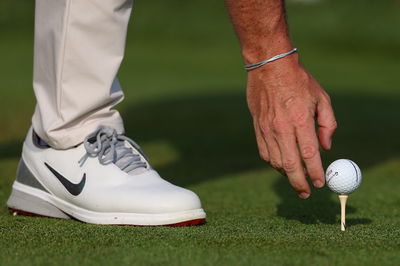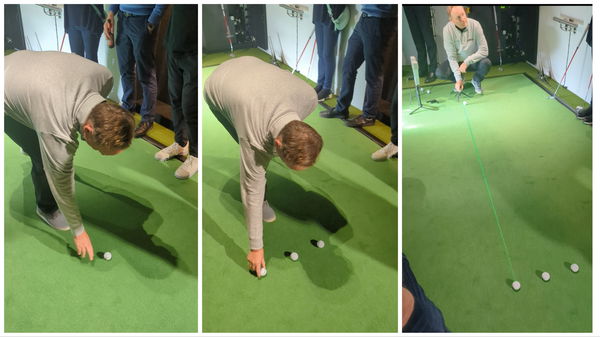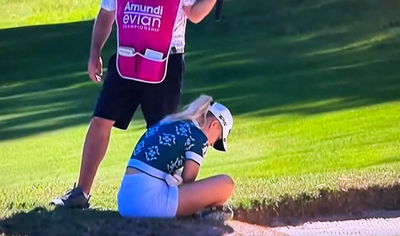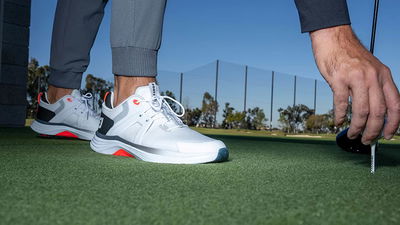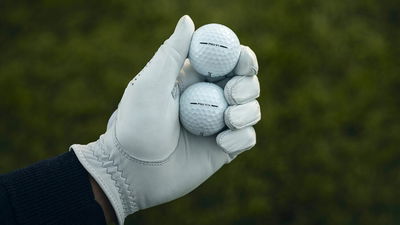Best golf putting tips and techniques
Check out our top putting drills to help you shoot lower scores
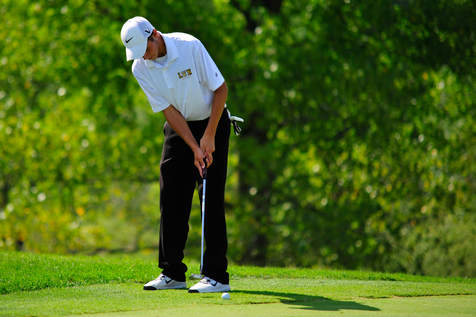
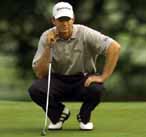 |
| Consider our top putting tips. |
Over forty per-cent of strokes in a round of golf are made with the putter on the putting green and it’s here that most frustration with golf occurs.
Take the time to practice your pre-shot routine and establish a consistent ball-strike with the sweet spot.
Here’s a few tips to work on to eradicate those niggling three-putts and bring your scores and handicap tumbling.
If you have any putting tips you want to share and that work for you, log-on to the Golfmagic forum and spread them around.
1. Palm to palm grip
Dangle your arms in front of you and clap your hands together with palms facing, before gripping the handle of the putter softly. Ensure the back of the left hand follows through on the line on which you want the ball to roll.
2. Ball between the eyes
Most good putters have their eyes over the ball. In practice take your stance and address and drop a ball from between your eyes. In the correct position the ball should fall on top of the club head.
3. Reading the lines
On faster greens the lines of the mower will give a clue to the pace. A lighter shade (mown away from you) means the surface is slightly speedier than the darker shade and will take more break or borrow.
4. Short range practice
On the practice green concentrate on good technique and consistency by holing a succession of four-footers. It will give you confidence in hearing the ball rattle into the cup rather than randomly firing long-range putts that never go in and ruin your focus.
5. Dustbin for distance
From longer range, pace is more important than line. Concentrate on rolling the ball to within an imaginary circle the width of a dustbin lid. Remember from 20 feet two putts is always good.
6. Find the sweet spot
Hold up the putter up between finger and thumb and tap the face with the edge of a coin to find the sweet spot – the clubhead will pendulum rather than twist. Mark that spot on the top of the clubhead so you can see it at address. Struck opposite that point the ball will generate overspin and roll.
7. Err on the pro side
With a curling putt, always allow for more break than you see. Pro’s know that a ball die-ing into the hole from side has more chance of dropping into the cup, than one weak and shallow.
8. Fringe benefits
Putting from the fringe of the green, imagine the hole is a few feet further from you and ensure you follow through to get a good roll.
9. Routine procedure
Establishing an identical pre-shot routine is essential. Check the line (ideally while others are putting out but not in their eye-line), address slightly away from the ball, check your alignment, practice swing to get the feel of the pace, shuffle forward to the ball. One look then pull the trigger, smoothly back and through.
10. Left below right
Comfort and alignment are crucial but the shoulders must be kept square and aligned to the direction of the line on which you want the ball to roll. Try left hand below right, (if you’re a right handed player – and like Jim Furyk or Padraig Harrington); it helps to keep the shoulders square at impact. You may have to adjust to a shorter-shafted putter to get the full value of the stroke.
More than 40% of strokes in a round of golf are made when putting so if you haven't got a consistent technique and routine then you'll find it tough to improve your scoring.
Take the time to practice your pre-shot routine, establish a consistent ball-striking technique off the sweet spot, and if you need some extra help then check out our Putting Practice Drills for specific shots.
But first off, here are a few golf putting tips to work on to eradicate those niggling three-putts and bring your scores and handicap tumbling, while the drills will aid your putting technique if you put them into practice.
10. Left below right
Comfort and alignment are crucial but the shoulders must be kept square and aligned to the direction of the line on which you want the ball to roll. Try left hand below right, (if you’re a right handed player – and like Jim Furyk or Padraig Harrington); it helps to keep the shoulders square at impact. You may have to adjust to a shorter-shafted putter to get the full value of the stroke.
9. Routine procedure
Establishing an identical pre-shot routine is essential. Check the line (ideally while others are putting out but not in their eye-line), address slightly away from the ball, check your alignment, practice swing to get the feel of the pace, shuffle forward to the ball.
One look then pull the trigger, smoothly back and through, which is even more vital on the monster putts as a poor motion will leave you in three-putt territory.
8. Fringe benefits
Putting from the fringe of the green, imagine the hole is a few feet further from you and ensure you follow through to get a good roll.
Remember though, depending on your touch, you still have a choice to either chip or putt off the fringe or alternatively try a rescue club for chipping if there's one in your bag.
7. Err on the pro side
With a curling putt, always allow for more break than you see. Pro’s know that a ball die-ing into the hole from side has more chance of dropping into the cup, than one weak and shallow.
This is especially important when putting on a downhill left-to-right break where aiming way out left of the cup is key for it to drop in high side.
6. Find the sweet spot
Hold up the putter up between finger and thumb and tap the face with the edge of a coin to find the sweet spot – the clubhead will pendulum rather than twist. Mark that spot on the top of the clubhead so you can see it at address. Struck opposite that point the ball will generate overspin and roll.
5. Dustbin for distance
From longer range, pace is more important than line. Concentrate on rolling the ball to within an imaginary circle the width of a dustbin lid. Remember from 20 feet two putts is always good.
It helps when using the dustbin lid to also hit your putt to an aim point, which is the imaginery marker that you're striking your putt towards, before gravity natually takes your ball to the hole.
4. Short range practice
On the practice green concentrate on good technique and consistency by holing a succession of four-footers. It will give you confidence in hearing the ball rattle into the cup rather than randomly firing long-range putts that never go in and ruin your focus.
Practicing short breaking putts is a very important thing to master as it will give you that added bit of confidenece when faced with an inevitably tough one on the course.
3. Reading the lines
On faster greens the lines of the mower will give a clue to the pace. A lighter shade (mown away from you) means the surface is slightly speedier than the darker shade and will take more break or borrow.
2. Ball between the eyes
Most good putters have their eyes over the ball. In practice take your stance and address and drop a ball from between your eyes. In the correct position the ball should fall on top of the club head.
1. Palm to palm grip
Dangle your arms in front of you and clap your hands together with palms facing, before gripping the handle of the putter softly. Ensure the back of the left hand follows through on the line on which you want the ball to roll.
Originally published October 2001. Updated September 2013.
Want anymore putting tips? Check out our Tour professional putting instructional guides...
Tips from the Tour: Becky Brewerton
David Howell: No.1 putting drill
Gary Boyd: Putting drill
Sponsored Posts
Subscribe to our Newsletter
Latest News
